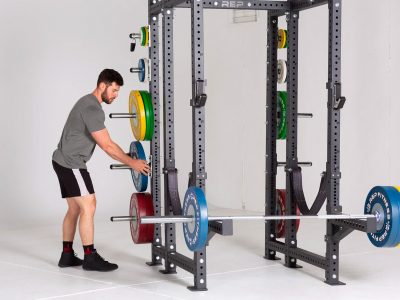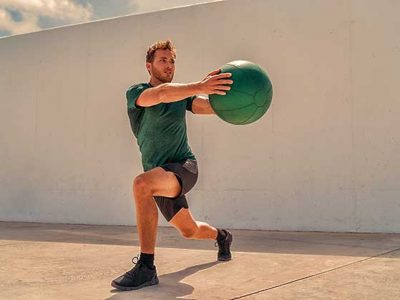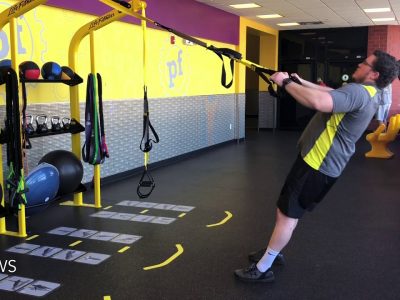Ever considered skipping rope for your daily workout but worried it could be bad for your knees? This high-impact activity can actually improve knee health when done with proper form!
In this blog, we’re going to debunk the myth, “Is Jump Rope Bad For Knees”, while providing tips on correct jumping techniques and how you can prevent injuries.
Bạn đang xem: Is Jump Rope Bad For Knees Updated 07/2024
Ready to jump into it? Let’s hop right in!
Understanding the Biomechanics of Jump Rope and Knee Health

Load Stage
The Load Stage of jump rope is the initial step that requires intense focus on knee health. In this phase, your body weight is loaded onto one foot as you elevate off the ground and swing the rope underfoot.
Proper posture during this stage can prevent numerous issues such as shin splints, ankle injuries, and more importantly – knee pain.
While this high-impact activity can seem daunting for some, especially those with arthritis or pre-existing joint problems, adopting a correct technique significantly alleviates potential risks.
To do so effectively, aim to land softly on your toes first instead of flat-footed; distributing force evenly across your feet reduces sudden impact forces transmitted up your leg to your knees.
This strategy coupled with wearing adequate knee support might make all the difference in maintaining healthy knees while enjoying a fun cardio workout with jumping ropes!
Flight Stage
During the flight stage of jumping rope, both feet are off the ground as you propel yourself upward. This is a crucial part of the exercise that requires proper technique to minimize stress on your knees.
As you jump, it’s important to keep your knees slightly bent and your core engaged for stability. Landing with soft, cushioned movements can help absorb impact and reduce strain on your joints.
By maintaining good form during this stage, you can ensure a safer and more enjoyable jump rope experience while protecting your knee health.
Remember to start slowly and gradually increase intensity as you build strength in order to prevent knee pain or injuries.
Landing Stage
Xem thêm : What Are Dumbbells Made Of Updated 07/2024
During the landing stage of jump rope, proper technique is crucial to prevent knee pain and potential injuries.
When you land after each jump, aim for a soft and controlled landing with bent knees.
This helps absorb the impact and distribute it throughout your lower body, reducing the strain on your knees.
Additionally, avoid jumping too high as this can increase the force exerted on your joints.
Proper form during the landing stage not only protects your knees but also improves overall jump rope performance while minimizing the risk of joint pain and discomfort.
Ways to Prevent Knee Pain While Jumping Rope
Proper Jump Rope Techniques
To prevent knee pain while jumping rope, it’s important to use proper jump rope techniques. Here are some tips:
- Maintain good posture throughout the exercise.
- Keep your core engaged and your back straight.
- Land softly on the balls of your feet, absorbing the impact with your leg muscles.
- Avoid jumping too high, as this puts unnecessary stress on the knees.
- Use a slight bounce in your knees to cushion the landing.
- Keep your knees slightly bent and relaxed during the entire motion.
- Jump with a slight forward lean to avoid excessive strain on the knees.
- Start with shorter jump sessions and gradually increase duration and intensity over time.
- Take breaks if you start feeling any discomfort or pain in your knees.
- Wearing supportive shoes can provide extra cushioning and stability for your knees.
Using the Right Equipment
To prevent knee pain while jumping rope, it’s important to use the right equipment. Firstly, choose a jump rope that is suitable for your height and fitness level. This will ensure proper form and reduce strain on your knees.
Additionally, consider using a padded or shock-absorbing surface to jump on, such as a rubber mat or cushioned flooring.
This can help reduce the impact on your joints during each landing. Lastly, wearing supportive footwear with good cushioning can provide added protection for your knees while jumping rope.
By using the right equipment, you can minimize the risk of knee pain and enjoy a safe and effective workout.
Warm-Up and Stretching
To ensure a safe and pain-free jumping rope session, it’s important to warm up your muscles and stretch. Here are some key steps to follow:
- Begin with five minutes of light cardio exercises such as jogging in place or brisk walking. This helps increase blood flow and warms up your entire body.
- Perform dynamic stretches that target the lower body, specifically the legs and hips. These include leg swings, hip circles, and knee raises. Dynamic stretches help improve flexibility and range of motion.
- Incorporate calf stretches to loosen up the muscles in your lower legs. Stand facing a wall and place one foot behind you, keeping it straight. Lean forward slightly until you feel a stretch in your calf muscle. Hold for 30 seconds on each side.
- Stretch your quadriceps by standing upright and grabbing one ankle behind you while gently pulling it towards your glutes until you feel a stretch in the front of your thigh. Hold for 30 seconds on each leg.
- Don’t forget to warm up your ankles as well! Rotate them clockwise and counterclockwise to loosen them up before starting.
- Finally, perform some light jump rope movements for a few minutes at a slow pace to gradually acclimate your body to the exercise.
Progressive Training
Progressive training is essential when incorporating jump rope into your fitness routine to prevent knee pain and reduce the risk of injuries.
By gradually increasing the intensity and duration of your workouts, you can build strength and endurance in a safe and effective manner.
Xem thêm : How Much Does The Smith Machine Barbell Weigh Updated 07/2024
Here’s how to implement progressive training for jump rope:
- Start Slow: Begin with shorter jump rope sessions, focusing on mastering proper form and technique before increasing intensity. This will allow your muscles and joints to adapt gradually without overwhelming them.
- Gradually Increase Duration: Once you feel comfortable with the basics, start adding a few minutes to your jump rope workouts each week. Aim for small increments, such as adding one or two minutes every few days or each week.
- Vary Intensity Levels: Incorporate different intensity levels into your training routine. Alternate between low-impact jumps and higher-intensity intervals to challenge yourself while still providing ample recovery time for your knees.
- Mix Up Styles: Experiment with various jump rope styles such as double unders, criss-crosses, or side swings to engage different muscle groups while minimizing strain on the knees.
- Include Recovery Days: Allow for adequate rest between jump rope sessions to give your knees time to recover and repair any microtraumas that may occur during exercise.
- Strengthen Supporting Muscles: In addition to jump rope workouts, include exercises that target the muscles surrounding the knees, such as squats, lunges, and leg presses. Stronger muscles will provide better support and stability for your knees during jump rope sessions.
- Listen To Your Body: Pay attention to any signs of discomfort or pain in your knees during or after jumping rope. If you experience persistent pain or worsening symptoms, it’s important to consult a healthcare professional for evaluation and guidance.
Is Jump Rope Bad for Knees?
Jump rope has been the subject of controversy when it comes to its impact on knee health. However, it is important to debunk the myth that jump rope is inherently bad for knees.
The truth is that improper techniques and progression while jumping rope can contribute to knee pain and injuries.
It’s crucial to land properly and not jump too high to prevent unnecessary strain on the knees. Additionally, individuals with arthritis may want to avoid high-impact activities like jumping rope.
Contrary to popular belief, jumping rope with proper form can actually improve knee health by strengthening the muscles around the joint.
It’s essential to consult a healthcare professional if you have existing knee pain or arthritis before starting a jump rope routine.
They can provide guidance on how best to protect your knees during exercise and whether wearing knee support might be beneficial in alleviating any discomfort.
Remember, while jumping rope itself does not necessarily harm the knees, other factors such as technique and pre-existing conditions can contribute to knee problems.
By understanding proper form and taking necessary precautions, you can safely enjoy the many benefits of jumping rope for overall fitness and cardiovascular health without compromising your knees.
Conclusion
In conclusion, while jump rope can potentially lead to knee pain and injuries if not done correctly, it is not inherently bad for knees.
By using proper jump rope techniques, utilizing the right equipment, warming up and stretching properly, and gradually increasing intensity, you can safely enjoy the many benefits that jumping rope has to offer.
Remember to consult a healthcare professional if you have knee pain or pre-existing conditions like arthritis before starting a jump rope routine.
With caution and proper form, jumping rope can be an excellent addition to your fitness regimen without causing harm to your knees.
Nguồn: https://usgyms.net
Danh mục: Gym Equipment










